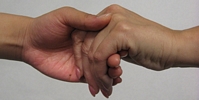|
|
 Acne (1,500) Acne (1,500)
 Addictions (1,500) Addictions (1,500)
 Advice (1,500) Advice (1,500)
 Allergies (1,092) Allergies (1,092)
 Alternative Medicine (1,500) Alternative Medicine (1,500)
 Anti Aging (1,500) Anti Aging (1,500)
 Breakup (1,500) Breakup (1,500)
 Cancer (1,499) Cancer (1,499)
 Dental Care (1,500) Dental Care (1,500)
 Disabilities (1,500) Disabilities (1,500)
 Divorce (1,500) Divorce (1,500)
 Elderly Care (1,498) Elderly Care (1,498)
 Goal Setting (1,500) Goal Setting (1,500)
 Hair Loss (1,500) Hair Loss (1,500)
 Health and Safety (1,497) Health and Safety (1,497)
 Hearing (1,500) Hearing (1,500)
 Law of Attraction (1,499) Law of Attraction (1,499)
 Marriage (1,500) Marriage (1,500)
 Medicine (1,497) Medicine (1,497)
 Meditation (1,499) Meditation (1,499)
 Men's Health (1,500) Men's Health (1,500)
 Mental Health (1,500) Mental Health (1,500)
 Motivational (1,500) Motivational (1,500)
 Nutrition (1,495) Nutrition (1,495)
 Personal Injury (1,499) Personal Injury (1,499)
 Plastic Surgeries (1,500) Plastic Surgeries (1,500)
 Pregnancy (1,496) Pregnancy (1,496)
 Psychology (1,500) Psychology (1,500)
 Public Speaking (1,500) Public Speaking (1,500)
 Quit Smoking (1,500) Quit Smoking (1,500)
 Religion (1,499) Religion (1,499)
 Self Help (1,500) Self Help (1,500)
 Skin Care (1,500) Skin Care (1,500)
 Sleep (1,500) Sleep (1,500)
 Stress Management (1,500) Stress Management (1,500)
 Teenagers (1,492) Teenagers (1,492)
 Time Management (1,500) Time Management (1,500)
 Weddings (1,500) Weddings (1,500)
 Wellness (1,500) Wellness (1,500)
 Women's Health (1,500) Women's Health (1,500)
 Women's Issues (1,500) Women's Issues (1,500)
|
Spring is in the air – and in your eyes, nose and throat…
35 to 40 million Americans suffer from seasonal allergies that result in itchy, watery eyes, runny nose and sneezing. Not much fun to say the least. Trigger-Happy Allergens An allergy is an exaggerated response of the immune system to a substance it sees as foreign to the body. It is “exaggerated” because these are generally substances that should be harmless, and in someone who is not allergic, they cause no response. But if you are sensitive to dust, pollen, dander or mold, then you are “allergic” and your immune system sees that substance as an enemy to be destroyed. The unpleasant symptoms occur as the body tries to get rid of the allergen.
How’d you get so lucky? Look to Mom and Dad. Studies show that allergies tend to cluster in families, so your likelihood of developing them depends a lot on your parents’ history. Odds that you become allergic are about 15% if neither of your parents are affected. You can make that 30% if one of your parents has allergies and double that to 60% if they both do. (1) Hay? Fever? Even though the common name for seasonal allergies is “hayfever”, that is actually a misnomer. Symptoms occur all through the seasons, not just when hay is gathered, and there is never a fever. The most common pollens that trigger allergies are: - Spring – Trees such as maple, oak, elm, birch and juniper
- Summer – Grasses such as bermuda and timothy, and weeds like thistle
- Fall – Ragweed (2)
If you are sensitive to pet dander or mold, you’ll develop symptoms upon exposure regardless of the season. Natural Defenses There are a number of things you can do to reduce your exposure to airborne allergens. Here are some tips to help keep symptoms at bay: - Watch for pollen counts and forecasts on your local news or in the paper. That way you’ll know what you’re dealing with.
- Be aware that pollen counts are highest in the early morning and on dry, windy days. The best time to be outside is after a good rain has cleared the air.
- If you’ve spent some time outdoors, take a shower and change your clothes when you go back inside.
- Keep your pets brushed and don’t allow them on the furniture. Pollen really clings to their fur.
- Use allergy-grade filters in your home ventilation system.
- Choose a vacuum cleaner that features a small particle or HEPA filter.
- Wash your bed sheets and blankets in hot water.
- Favor hard surfaces like hardwood or ceramic for flooring rather than carpet. (3)
And keep yourself as vigorous as possible with healthy diet choices. One of the fastest and most convenient ways to boost your immune system is to use a proven power-packed supplement that helps block allergic reactions. One study showed that our CellVita formula stimulated a nearly 14-fold increase in key immune system players called interferon-gamma cells. Just the kick to keep you going.
Don’t forget to consult your doctor about any changes to your diet, exercise or supplement regimen.
Until next time… - Szeftel,Alan, MD, FCCP, and Shiel,William C. Jr., MD, FACP, FACR, “Allergy/Allergies”, MedicineNet.com, available from:
- Eleves, Peter J., PhD, “Seasonal Allergies”, The Merck Manuals Online Medical Library, September 2008, available from:
- Mayo Clinic Staff, “Springtime Allergies: Nip Them In The Bud”, May 2008, available from:
© 2009 Chesapeake Nutraceuticals
|
|
|



